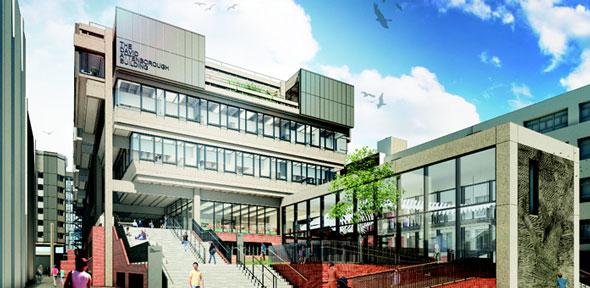
The final open meeting for University administrative staff of the academic year took place last week in the Mill Lane Lecture Theatres. The following summarises the event for those who were unable to attend.
Refurbishing old accommodation and erecting new buildings are not “nice to haves” – they are central to our future competitiveness, and require ongoing investment of about £100m over the next 20 years.
Senior Pro-Vice-Chancellor Steve Young
The first half of the meeting was given over to a presentation by Professor Steve Young on the current priorities and challenges facing the University. As many of you will know, Professor Young is coming to the end of his term as Senior Pro-Vice Chancellor, so is as well placed as anyone to provide an up-to-date analysis of this kind.
Professor Young began by highlighting some of the achievements that the University and its staff should feel proud of. Cambridge continues to be ranked among the top five universities in the world, is globally admired, and is on a sound financial footing, he said.
The University is in a good position to achieve some of its immediate priorities, which were summarised as follows:
- Continuing to grow, especially our research base and graduate student body
- Improving the experience of graduate students
- Increasing investment in our operational and non-operational estate
- Strengthening our international presence
- Increasing fundraising.
However, there are a number of considerable challenges that need to be overcome. The University currently loses money on its research and teaching activities and, with research growing at approximately 7 per cent a year, it will be necessary to address the funding shortfall over the next five to ten years.
There is also a pressing need to invest in the University’s estate. Over the last decade, Oxford spent somewhere in the region of £92m a year on its estate; Imperial approximately £88m. Over the same period, Cambridge spent only £58m a year. Refurbishing old accommodation and erecting new buildings are not “nice to haves”, Professor Young explained – they are central to our future competitiveness, and require ongoing investment of about £100m over the next 20 years. Cambridge is lucky to have a variety of revenue streams to support its capital plan, but staff should note the increasing reliance the University is placing on philanthropic donations in its financial projections. Fundraising is vital to our future health and must be academic-led, he added.
Today’s universities need to be adept at forging strategic alliances at all levels. Professor Young singled out the University’s ongoing relationships with Cambridge University Press and Cambridge Assessment as particularly important, especially as both operations adapt to the digital era. He also spoke of the potential opportunities afforded by international partnerships. The University, with its geographically dispersed alumni body, global connections and dedicated International Strategy Office, is in a good position to drive forward exciting global collaborations.
To close, Professor Young acknowledged that the higher education sector would need to deal with a challenging two or three years. However, he remained positive about the medium and longer term outlook, saying that a far greater risk to the University was a loss in its global standing and competitiveness that might arise from an overly prudent approach to short-term pressures.
Following the presentation, there was a panel discussion on IT developments at Cambridge. The discussion, facilitated by Barney Brown from the Office of External Affairs and Communications, had the following panellists: Dr Rachael Padman, Chair of the ISC’s User Needs Committee; Mr Chris Edwards, Deputy Director, UIS; and Dr Danny Kingsley, Head of Scholarly Communications in the University Library.
Staff can listen to an audio recording of the discussion, which also includes questions from the audience, via the Further Links section on this page.
